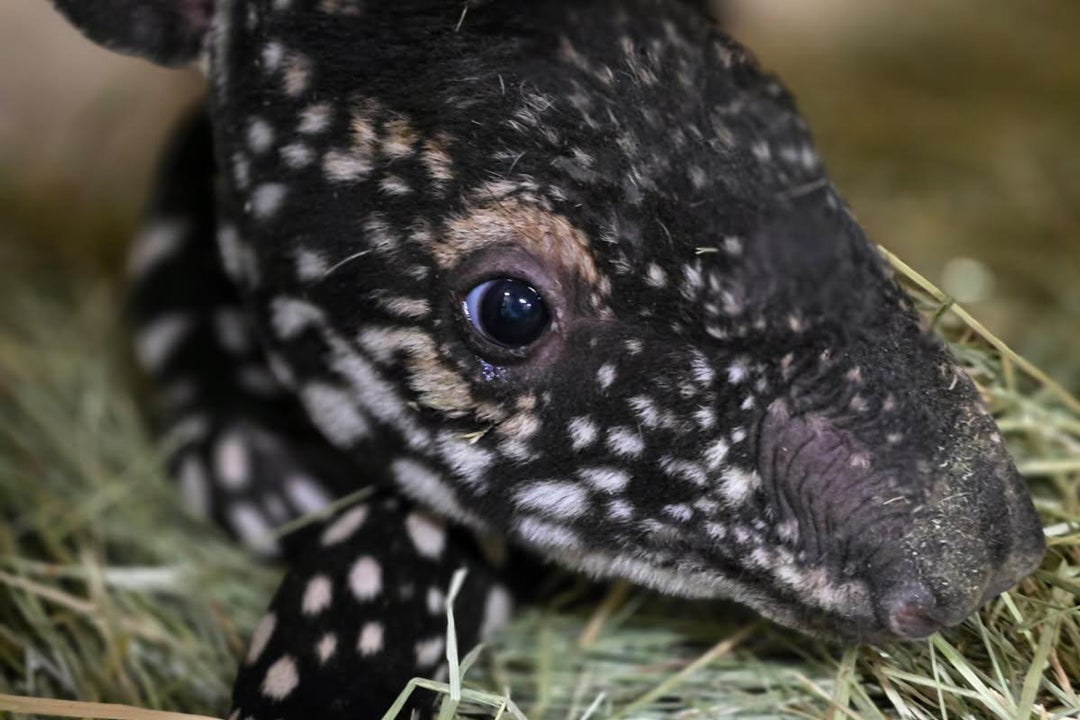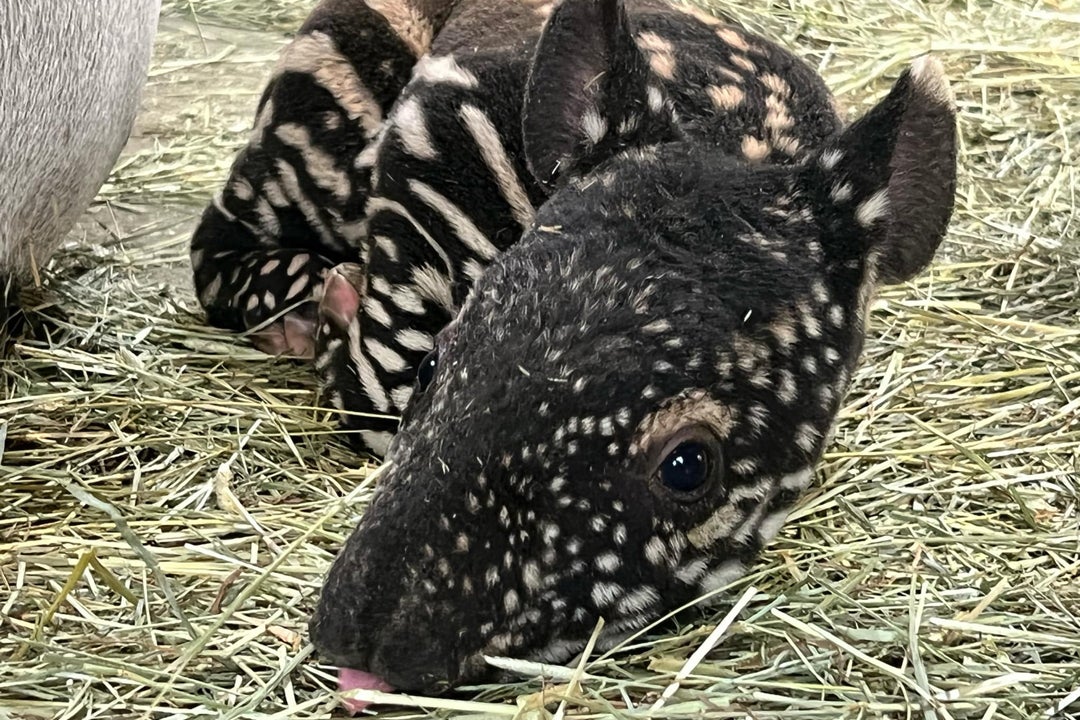An endangered and rare Malayan tapir calf was born this weekend at Washington’s Point Defiance Zoo and Aquarium.
Only the second tapir birth there in more than a hundred years, the unnamed newborn resembles a “fuzzy, walking watermelon.”
“Exciting news! We’re thrilled to announce that tapir Yuna gave birth to a rare and endangered Malayan tapir calf Sunday night,” the zoo wrote.

Covered in small, white spots and stripes that helps it to camouflage, the brownish-black calf is considered to be healthy. Video posted to social media showed its tiny perked up ears and curious, sniffing snout. Its sex was not identified.
Laying down next to its 10-year-old mother Yuna, the little one quickly closed its jet black eyes and fell asleep. The calf’s father, Baku, is the same age as Yuna.
Yuna is also doing well, according to Head Veterinarian Dr. Karen Wolf.
Both of the parents, who were paired as a part of a program that helps ensure the survivability of Malayan tapirs in human care, weigh a good deal more than the 20-pound calf. Yuna is a whopping 900 pounds and Baku is 800.
“We’re thrilled to witness this incredible moment and watch the calf grow,” Curator Telena Welsh said in a statement.
The baby will remain behind the scenes in the zoo’s Asian Forest Sanctuary, nursing and bonding with Yuna under the supervision of the zoo’s veterinarians.
“The calf will receive a veterinary checkup after allowing time for the newborn and Yuna to bond,” the zoo noted.
Tapir calves typically nurse for a period of six months and stay with their mothers for as long as a year-and-a-half.
Malayan tapirs, which are most closely related to horses and rhinos, are classified as endangered. Native to Southeast Asia, the herbivorous species is in decline due to habitat loss caused by deforestation and human development. At the time of the last assessment, just under a decade ago, the number of mature individuals in the wild was between 2,000 and just under 2,500.

They play a crucial role in their ecosystems by dispersing seeds and maintaining forest diversity.
The calf’s name will be shared in the coming weeks, and zoo-goers will be able to see it in person later this spring.
This announcement was met with reaction from adoring fans.
“Moo Deng who,” wrote X user @BerlantBro.







